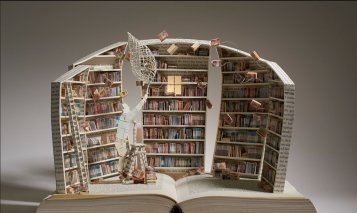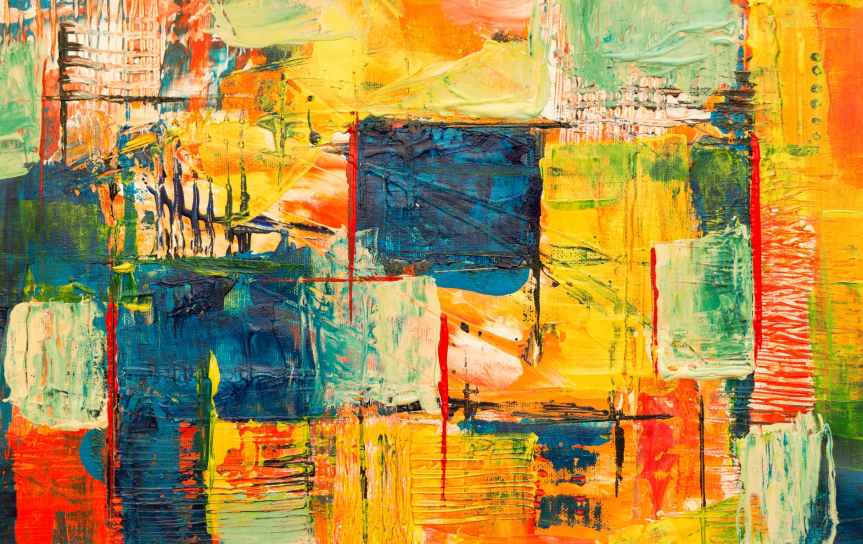25th Annual NCRCL MA/IBBY UK Conference
‘Crafts and Hobbies in Children’s Books’
Saturday 10th November 2018, 9:30 a.m. – 5:15 p.m.
Tickets are available here.

This short blog series will span the next sixteen days, counting down to the 25th Annual Conference. It will be showcasing some of the papers anticipated for this year’s NCRCL/IBBY UK conference. Each day we will be turning the spotlight on to a different parallel session, giving an idea of what’s to come! You can expect lots of exciting content from well-known illustrators and craft practitioners, academics, and key figures in the children’s literature world!
PANEL A
Creative Practice and Theory and Crafts
*Ann Malaspina: Knitting for Peace and Understanding*
About the speaker:
Ann Malaspina has an MFA in Writing for Children and Young Adults from Vermont College of Fine Arts and a BA in English from Kenyon College. She has written over 30 books for children about social issues, history, and people who overcome great challenges.
About the paper:
Knit one. Purl one. Knit one. Purl one. The craft of knitting takes patience and effort. Chances for failure lurk at every turn of the needles. A lost stitch. Too many knots. Giving up too soon. Thus, a knitting project is an excellent frame for a picture book. Both tend to have an optimistic beginning, a murky middle and, hopefully, a triumphant end. Knitting can also be a metaphor for much larger concepts like building a friendship, solving a problem, or even creating peace after war.
My paper “Knitting for Peace and Understanding” will explore the many ways knitting can carry a plot, build a theme, and invite young readers into a participatory experience (i.e. inspire them to pick up knitting needles after they close the book). I’ll examine several contemporary picture books that incorporate knitting, each to a different purpose.
I thought a lot about knitting as I wrote my picture book A Scarf for Keiko (Kar-Ben Publishing, 2019). It is the story of two children – a Japanese American girl and a Jewish American boy – who are knitting socks for the soldiers during World War II. Their teacher at a Los Angeles school makes them knit every day. Keiko is an excellent knitter, but Sam pokes himself with the needles and tangles up the yarn. When Keiko offers to help him, Sam refuses. The US is at war with Japan, and his best friend Jack has told him not to talk to Keiko.
Knitting is both metaphor and plot in my story. During World War II, people were encouraged to knit for the soldiers as part of the war effort. Even First Lady Eleanor Roosevelt carried her knitting bag everywhere. Knitting is also a metaphor for the hard work, and pit falls, of friendship. A scarf or pair of socks won’t get finished without a knitter doing the work. The project can unravel any time. Only through perseverance can it be completed. Knitting symbolizes caring, and even love.
When Keiko and her family are sent to an internment camp, she leaves a gift for Sam’s brother who is fighting in the war. A pair of blue knitted socks. Ashamed of his behavior toward Keiko, Sam finds some yarn and picks up his needles. In the final scene, Keiko, shivering in the cold desert, wraps herself in Sam’s gift of a red scarf. Knitting has bridged hate and fear, and given both children hope for the future.
*Anita Radini: Narrating ancient crafts to children: perspectives from an archaeologist*
About the speaker:
Dr Anita Radini is an Archaeological Scientist based at the University of York. She worked for the University of Leicester Archaeological Services (ULAS) as Archaeobotanist for 10 years, and studied part-time for a PhD, received in 2017. While at ULAS, Anita worked on excavations and archaeological material in Europe, Africa, the Middle East and North America. She is now based at the University of York as Wellcome Trust Research Fellow in Medical Humanities. Her research focuses on ancient diet and living conditions, and how they evolved through time. In recent years, she has developed a strong interest in the inequality of living in conditions and health outcomes generated by division of labour. She is developing methodologies to detect professions from ancient skeletal remains, research funded by The Wellcome Trust. During many years of field work in North Africa, Anita developed a strong interest for traditional but disappearing crafts, their impact on health and the need to perpetuate them. She became very interested in the way such ancient crafts are communicated in different ways to children, and in the power children’s narratives potentially have to give a future to such craft.
About the paper:
Ancient crafts have, for a long time, interested academic and non-academic audiences, and have captured children’s imagination. In recent years the development of experimental archaeological methodologies has allowed a better understanding of the technologies used in ancient times. Often the main focus of archaeologists in engaging with children has been of a practical nature, aimed at the teaching and the communication of ancient skills centred around the set of gestures that lead to the ‘final product’ rather than on the ‘experience’ of the crafters themselves, which too often remains invisible in the archaeological record. This paper explores ancient crafts and children’s narratives from the standpoint of the division of labour and the inequality of living conditions often experienced by the ancient work force. Using recent personal experience of the author in writing a novel set in the Ancient Sahara, this paper will outline the challenges faced in narrating to children the hardships of the ancient crafters behind the artefacts retrieved from excavations.
*Siddharth Pandey: The Hand, the Head, and the Hewing of Things: A Brief Look into Fantasy’s ‘Aesthetic of Making’*
About the speaker:
Siddharth Pandey will submit his PhD thesis on craft and fantasy this October at the Faculty of Education, University of Cambridge. An interdisciplinary researcher, his interests span across a range of subjects, from colonial architecture and materiality studies to visual anthropology, heritage conservation and cinema, all of which he has presented and published on. As a landscape photographer and curator, his work has been commissioned and displayed at the Oriental Museum, Durham, and the Victoria and Albert Museum, London. He is the recipient of the 2014-17 Cambridge International Scholarship, the 2012-13 Cambridge Commonwealth Scholarship, and the 2012 Charles Wallace India Trust Scholarship, among other awards. In 2016 and 2017, he also served as a Final Panel Judge on the Queen’s Commonwealth Essay Writing Competition, the world’s largest and oldest literary contest for school children.
About the paper:
This talk derives from my soon to be submitted PhD thesis on what I phrase as the fantasy genre’s ‘aesthetic of making’, a concept that I have been developing for the past few years by studying a variety of British fantasy texts to understand the genre’s continual proclivity for showing or referencing the idea of ‘making’. While all literature is concerned with the making of some or the other kind of represented world(s), fantasy literature – I argue – is particularly disposed towards exploring ‘making’ as a motif or a theme in-itself. This making is more than often specialized in nature, a ‘craft’ as it were, and right from the British fantasy novel’s inception in the late 19th century (with the works of the craftsman-socialist William Morris) to that of contemporary fantasists like Philip Pullman, Alan Garner, and William Morris (to name just a few), fantasy novels have repeatedly alluded to the magical as something that has to be ‘practiced’ as a ‘craft’. How might we understand these fictional realms of practice? What does practice actually entail? As my presentation will show, the crafting of magic should be understood as participating in processes of ‘deep engagement’ and ‘sentient immersion’, concepts that I derive from the celebrated sociological and anthropological works of Richard Sennett (The Craftsperson, 2008) and Tim Ingold (Making, 2013). By recognizing the ‘madeness’ of magic in such terms, we can better understand the genre’s frequent exposition of the human hand and the human head in interconnected ways, ways that are fundamental to the creation of fantastical universes as deeply embodied domains and therefore as ‘alive’.
Ultimately, I argue that it is this aliveness that overwhelmingly contributes to the distinct feel and ambience of alternate universes.

